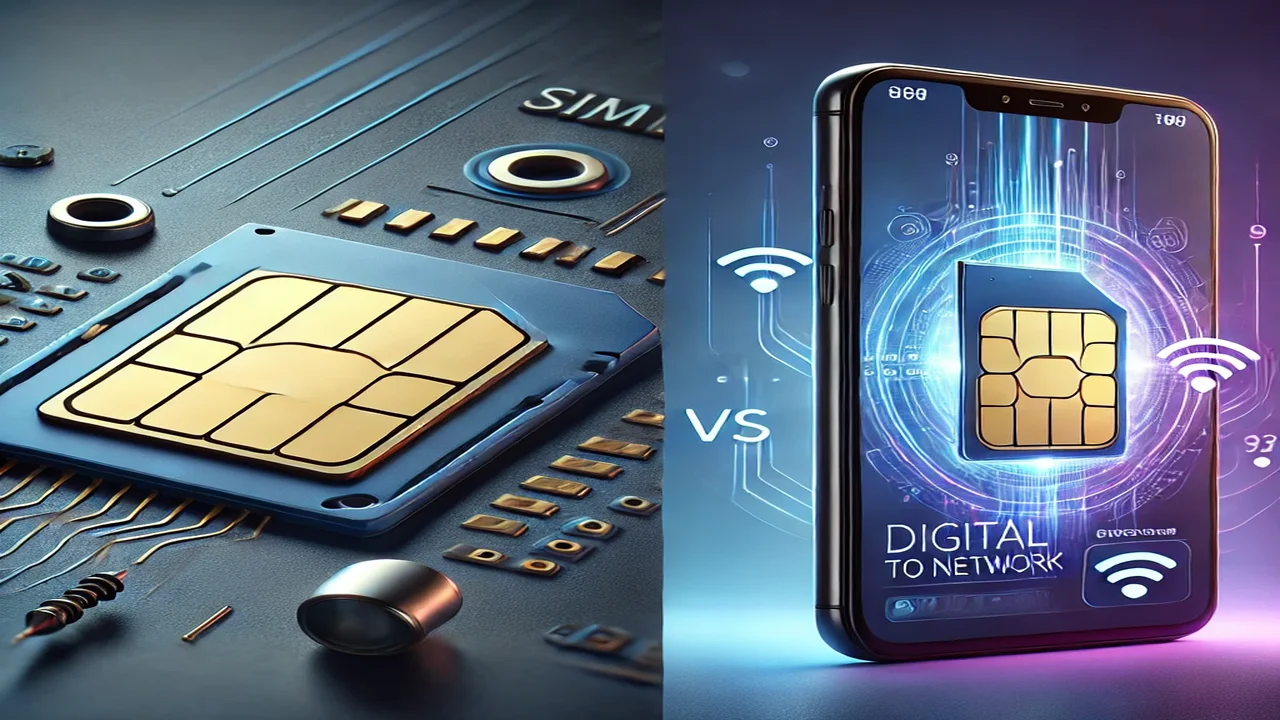Your smartphone is your lifeline when you’re traveling. Not only does it allow you to research your trip and manage bookings, but it also helps you keep in contact with family and friends at home.
But using your phone when abroad can be frustrating. Are you even sure you’ll be able to connect to the local network in your host country? And if so, won’t roaming charges cost you a small fortune?
eSIMs are an emerging technology that aims to address all the travel concerns of smartphones overseas. But can they truly replace the traditional SIM card we’ve all grown up using? Or are they another flashy travel trend?
To help you make an informed decision, let’s take a moment to explore the pros and cons of eSIMs and physical SIM cards. Below, you will learn just how valuable eSIMs can be and what you need to research ahead of your trip.
First—what exactly are eSIMs? And how are they different?
Many smartphone owners will be familiar with the traditional SIM card. It is a small, physical piece of plastic that stores identifying information and slots into your phone.
Think of a SIM card as the middleman between you and your mobile network. It allows you to make calls, connect to mobile data, and more. To change the network, users must remove the old card and insert a new, suitable one in its place.
eSIMs are a new way of connecting to different networks. They are created as a digital version of a traditional SIM card, thus eliminating the need to open your phone and replace cards. Instead, smartphone owners can make changes through an app.
eSIMs offer an easy and convenient way to swap between networks on the fly. This makes them an ideal traveling companion, especially if you plan to visit several countries in one trip. That said, eSIMs are still a new and emerging technology, and few people know what their benefits (and limitations) might be.
The pros and cons of using eSIMs vs physical SIMs
To help you decide whether an eSIM is an essential travel buddy, let’s compare how they perform against traditional SIMs in three core areas:
- Reliability
Coverage is one of the most critical parts of using your phone when traveling. You want to ensure you can always connect to a network to send and receive calls, use communication apps like WhatsApp, and more.
It’s here that eSIMs are in a league of their own. They allow seamless travel connectivity by switching between local networks. This means you can always expect coverage wherever you are, without the need or hassle of sourcing, buying, and changing a physical SIM card.
Best of all, you can pre-pay for your plan before your trip and activate it before leaving. As soon as you touch down at your destination, you can use your phone without any fuss.
This has enormous cybersecurity benefits, too. You won’t have to connect to risky public Wi-Fi networks, like at airports, to check on bookings and reservations. It helps you avoid risky networks that may compromise your phone’s security.
- Cost
A downside of using a physical SIM card is that you may face significant roaming charges abroad. These charges can vary depending on where you are visiting, your mobile plan, and your provider. Even if you are covered under a fair-use policy, you might exceed the limit and be charged a significant fee.
Because you are connecting to a local network, eSIMs can help eliminate the dangers of roaming charges. You can take out a cost-effective package that suits the length of your trip. Many providers offer flexible data plans to fit every need. This means you’ll only pay for what you plan to use.
On the other hand, physical SIMs have additional costs to consider. After all, you must buy each new card you plan to use, including their delivery charges. If you plan to buy physical SIMs on your trip, remember these are often sold in tourist hotspots. With high demand, you can expect a premium charge at these places.
- Compatibility
Compatibility will ultimately depend on your smartphone model. Older devices typically use physical SIM cards, making them the default choice. But the smartphone industry is changing.
Research from 2023 estimates that by 2027, the eSIM market will grow to around $16.3 billion. As such, newer phone models are set to embrace eSIM technology in a big way.
Still, you must research your phone and see what compatibility it has and doesn’t have. Some phones may be able to use both types of SIMs simultaneously, offering you the ultimate choice.
Despite their modern features, eSIMs are incredibly user-friendly for almost every phone user. This is thanks to easy-to-use provider apps that can be used to turn the eSIM on and off with a simple click.
Unfortunately, changing physical SIM cards requires a certain degree of skill and patience. You will need to open your phone and remove accessories to do so. This can introduce huge risks, as users may damage or lose SIMs, rendering them useless.
How do you pick the right service provider?
As exciting as eSIMs are, many new providers enter the market daily. Savvy travelers must do their research to get the best packages possible.
To do this, you must check and verify information about plan options, coverage, accessibility, and pricing to gauge each service’s value. You can do this by reading customer and industry reviews and feedback.
For example, after reviewing Saily eSIM, we can see that this eSIM service performs well in terms of compatibility, support, and speed. It is also available in over 150 countries and offers 24/7 customer support, both of which are major advantages for any traveler.
A final word on eSIM and physical SIM cards
Traveling can be a stressful time for people. One thing that catches many off guard is trying to get their smartphone to work overseas. As you’ve seen in this article, eSIMs have become a lifeline in taking the stress out of using your phone abroad.
However, there are certain things you must bear in mind first. Remember to research the make and model of your smartphone to see if you can benefit from this new technology.
Finally, spend time researching the best eSIM service provider. This will help you save money and ensure connectivity to a local network upon arrival at your destination.

Ruby Stauffer is a prominent technology blogger known for her insightful analysis and in-depth reviews of the latest tech trends and gadgets. Her blog has become a go-to resource for tech enthusiasts seeking reliable information and expert opinions on the ever-evolving world of technology.

